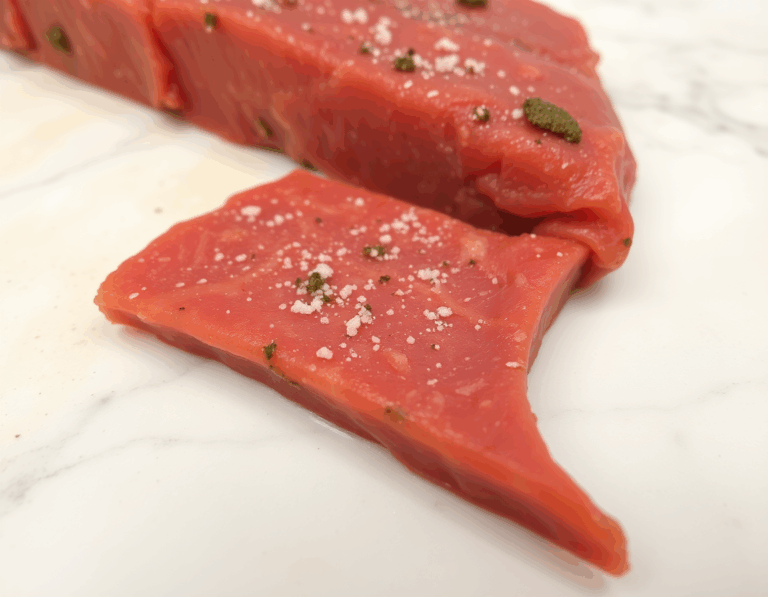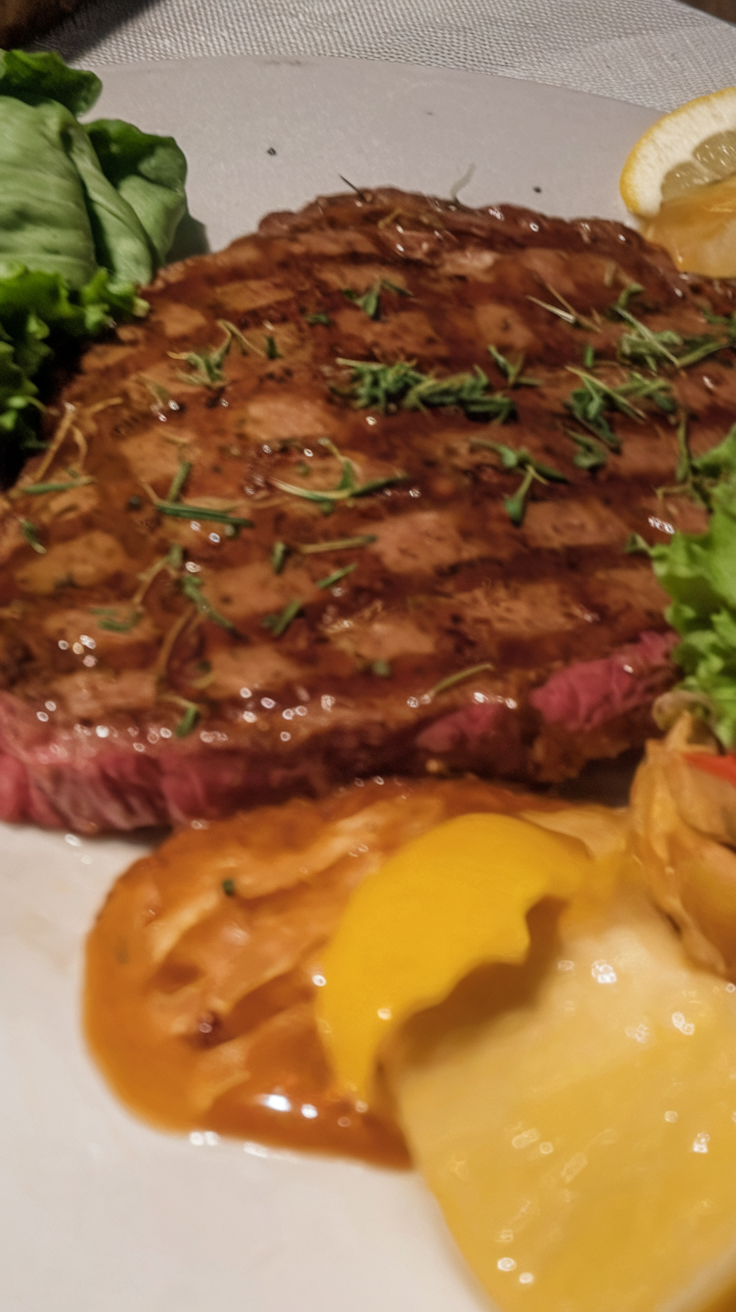Picture this: a sizzle in the pan, the aroma of garlic mingling with fragrant herbs, creating a symphony of scents that dance through your kitchen.
Steak Diane—it’s not just a dish, it’s an experience, a culinary time machine whisking you back to the elegance of mid-century dining. You know, that era when dinner was an event, not just a meal.
So, grab your apron and let’s create something extraordinary tonight.
Steps
- Begin by cutting or pounding the steak thinly to ensure it cooks quickly. Season the steak with salt and pepper.
- In a pan, melt butter over medium heat and add the seasoned steak. Cook the steak until it’s browned on both sides, then remove it from the pan and set it aside.
- Using the same pan, add Worcestershire sauce and any additional seasonings, such as garlic or chives, to the pan juices. Stir well to combine and enhance the flavors.
- Return the steak to the pan and coat it with the sauce. Optionally, flambé the sauce with brandy or sherry to add depth to the flavor.
- Serve the steak hot, garnished with chopped parsley or a touch of cream or mushrooms if desired. Enjoy your retro-inspired Steak Diane.

Ingredients
- Beefsteak, cut or pounded thin
- Butter
- Worcestershire sauce
- Ground black pepper
- Salt
- Chopped parsley
- Garlic (optional)
- Brandy, dry sherry, or Madeira (optional for flambéing)
- Chives (optional)
- Dry mustard (optional)
- Lemon juice (optional)
- Cream (optional in modern recipes)
- Mushrooms (optional in modern recipes)
FAQ
- What is Steak Diane?
- Steak Diane is a dish consisting of pan-fried beefsteak served with a sauce made from the seasoned pan juices. Traditionally, it was prepared tableside and sometimes flambéed, becoming popular in “Continental cuisine” from the 1940s to the 1960s.
- Where did Steak Diane originate?
- Although not found in classic French cuisine, Steak Diane is believed to have been invented in London in the 1930s. It gained popularity in luxury restaurants and hotels in both Europe and the United States.
- Is Steak Diane related to any classical dish?
- Steak Diane is somewhat similar to steak au poivre, but it is less peppery. Early recipes included ingredients like steak, butter, Worcestershire sauce, pepper, salt, and parsley, with some variations including garlic.
- How has the recipe for Steak Diane evolved over time?
- While early versions were simple, consisting of just a few ingredients, later American recipes became more complex, often including brandy, sherry, chives, dry mustard, and lemon juice. Some modern versions add cream or mushrooms to the sauce.
- Who is credited with popularizing Steak Diane?
- Several chefs and establishments have been credited with popularizing Steak Diane. Notably, Bartolomeo Calderoni of Quaglino’s restaurant in Mayfair is said to have popularized it in the 1930s, and Tony Clerici claimed to have invented it in London in 1938. It was also introduced to New York by Beniamino Schiavon, “Nino of the Drake.
Tips
- Use Thin Cuts of Steak: For optimal results, use thinly sliced steak, as it cooks quickly and evenly. This ensures the meat remains tender and juicy, ideal for the rapid cooking required in the recipe.
- Enhance with Flambé: Consider flambéing the sauce with brandy, sherry, or Madeira for a dramatic flair and to deepen the flavors of the dish. This step adds a layer of sophistication and can enhance the dining experience.
- Customize the Sauce: Experiment by adding ingredients such as mushrooms or cream to the sauce for a richer and more complex flavor profile. These additions can complement the traditional Worcestershire sauce and butter base.
- Finish with Fresh Herbs: Garnish the finished dish with freshly chopped parsley or chives. This not only adds a pop of color but also a fresh, aromatic element that brightens the overall flavor.
Equipment
- Flambé Torch: If the recipe involves flambéing, a kitchen torch would be useful.
- Cast Iron Skillet or Heavy-duty Frying Pan: For searing the steak properly.
- Meat Mallet: To pound the steak thinly if required by the recipe.
- Saucepan: For preparing the sauce if you want to use a separate pan.
- Whisk: For mixing the sauce ingredients smoothly.

